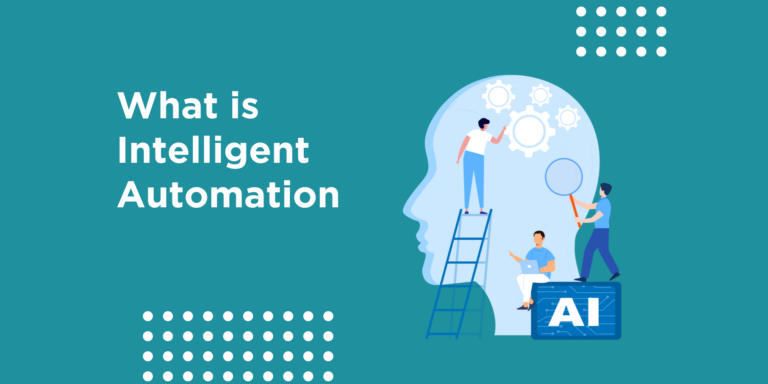Artificial Intelligence—Promise and Peril for Mortgage Lending.
Introduction
This blog post shares the key takeaways from last week’s forum hosted by the Mortgage Bankers Association (MBA) and MISMO titled: Artificial Intelligence—Promise and Peril for Mortgage Lending.
Over 150 people attended the forum including: mortgage lenders (NFM, Freedom Mortgage, Rocket Mortgage, United Wholesale Mortgage to name a few), Fannie and Freddie, technology companies such as MOZAIQ, AWS, Google, Snapdocs and Nvidia, and consulting companies, amongst them PwC, E&Y and KPMG. There were even representatives from the US government who lent a perspective on where the efforts to regulate AI stand. All in all a great sampling from the artificial intelligence ecosystem.
The forum had several objectives:
- Educate the audience on “The Art of the Possible” with AI
- Provide examples of AI in action at mortgage lenders today
- Share a political perspective (the US Senate Intelligence Committee) on AI
- Discuss how AI must embrace “Responsible AI” and focus on managing risk in order to be adopted successfully
- Demonstrate ways on how to get started with AI
The Key Takeaways
Note: these are the items that stood out for me, that’s not to say that there weren’t other notable insights at the conference. On the contrary, it was one of the better and informative one-day forums I have attended in some time.
1. Use AI to solve legitimate business problems
One of the most lasting, and yet obvious, messages from the conference (thanks to Mr. Steve Holden of FannieMae) was that if you are going to invest in AI, do it to solve a legitimate business problem—don’t create a hammer in search of a nail.
One of the examples provided was that of finding rent stream payments in bank statements (author’s comment: I was flabbergasted that rent payments are rarely considered when making a mortgage loan to a first time homebuyer, thus punishing minorities in primis). The process Fannie implemented was elegant and efficient: take unstructured data—in this case thousands of bank statements, use human experts (i.e., underwriters) to comb through the data (find what looks like a consistent amount, taking into consideration all possible permutations, and tag the data), use this output to teach the machine, and then incorporate the machine’s output into the DU credit risk assessment.
The result? Since September 2021, approximately 4,700 mortgage (51% of these borrowers identify as minority) applications have benefited from positive rent payment history (Source: Fannie Mae).
2. Responsible AI is a critical success factor
All of the speakers in the Responsible AI session provided unique insights, which can be summarized by the FHFA’s Core Ethical Principles as contained in their AI/ML Risk Management Advisory Bulletin. These principles are not just applicable to the mortgage industry, but must be considered anytime an AI-powered solution is developed, deployed, monitored and managed.
- Accountability: Ensure there is human responsibility assigned for all AI/ML outcomes
- Transparency: Provide visibility into where, how, and why AI/ML is used e.g., for consumer-facing risk models that pose Fair-Lending risk
- Fairness & Equity: Ensure fair and equitable outcomes across different groups
- Diversity & Inclusion: Address implicit and explicit biases in AI/ML systems
- Privacy & Security: Respect and protect privacy rights and data
- Reliability & Safety: Monitor to ensure the AI/ML system functions as intended
Source: FHFA, Advisory Bulletin 2022-02 ARTIFICIAL INTELLIGENCE/MACHINE LEARNING RISK MANAGEMENT
3. AI will be regulated
Representatives for two US Senators on the Senate Select Committee on Intelligence, Senator Warner (Chairman, VA), and Senator Rounds (SD), made it clear: AI will be regulated, it’s just a matter of time.
AI is one of the top 5 tech challenges in the world today, and because the US finds itself in an uneven playing field vis a vis China (they are far ahead of the US and don’t work with similar values), there are several bipartisan initiatives on AI to educate government on how to best regulate and embrace AI. The challenge will be how to create the right impactful regulations in as short a time as possible. Doing nothing is harmful, but doing something needs to be done right.
4. You cannot NOT do AI (a double negative, I know, but it makes the point)
If you’re not embedding, or thinking of embedding, some form of AI into your services today, you will fall behind to your competitors, who are probably already on their way to implementing AI-enabled solutions. AI implementations, to keep in line with the prior point regarding responsible AI, should be implemented carefully, with responsibility, transparency and accountability, ensuring that risks are properly managed.
5. Want to deploy Gen-AI? Then think BIG, but start small
The example of BloombergGPT was astounding: built for the financial services market to help guide investment decisions, the 50 Billion parameter model was trained for over 1.3 Million hours on over 64 GPUs on AWS. That’s Big. But you probably don’t want to start there.
Instead, focus on a real problem that needs to be solved, like answering common queries from Loan Officers and Underwriters to help them make decisions more quickly and more accurately. An example provided by PwC was to upload a HUD document into their proprietary, trained LLM and then allow users to query the system with a question that is specific to the document. The system finds the relevant info, but unlike a basic search engine, can format the data into usable text at the direction of the user.
6. Where to start with AI
Should lenders dive head-first into implementing Gen-AI? That’s a great question that was posed at the end of the conference. They can, but they need to ensure that all the basic principles still apply—start small, create a foundation that can be built on, solve a real problem, and ensure the system is responsible.
A better place to start, rather than jumping into Gen-AI, is to invest in some sort of intelligent automation that does the basic blocking and tackling, like document indexing, data extraction from loan documents, and enables an underwriter to be more efficient at how they process loans. Then, build on that foundation with incremental Gen-AI solutions that increase the efficiencies even more.
Note: this blog post was written by a real human and does not contain content generated by ChatGPT or any other Generative-AI platform.


